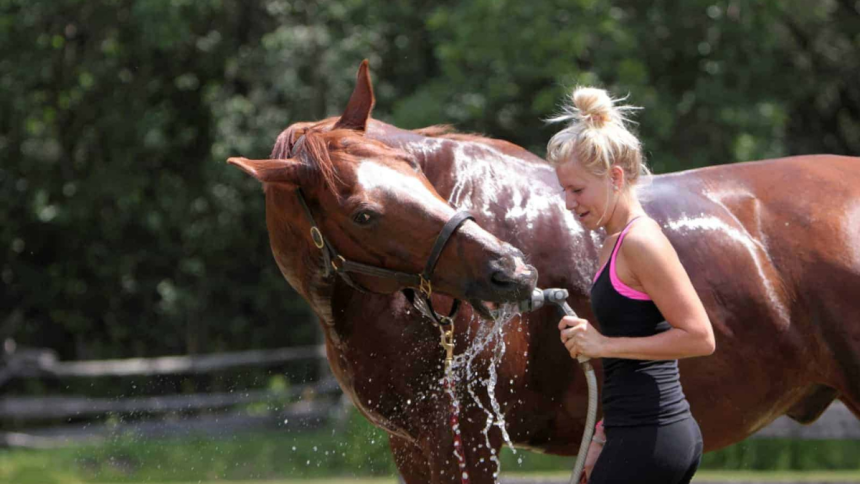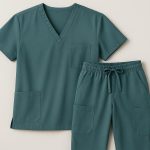As the summer sun blazes across the landscape, you are undoubtedly aware of the challenges it poses, not just for yourself but also for your equine companions. Ensuring your horse remains cool and comfortable during these sweltering months is paramount to their health and performance. In the pursuit of equestrian excellence and animal welfare, it is essential to equip yourself with effective strategies to combat oppressive heat, including innovative approaches like Alternative Magnetic Therapy for Equine Recovery, which may support muscle relaxation and overall recovery during periods of environmental stress.
Understanding the Risks of Heat for Horses
Recognizing Heat Stress Symptoms
When temperatures rise, horses are vulnerable to various heat-related conditions. Understanding these risks is crucial for their health and welfare. Horses can suffer from heat stress, which can lead to more severe issues, such as heat exhaustion and even heatstroke, if not addressed promptly. Key symptoms of heat stress include rapid breathing, increased heart rate, excessive sweating, and lethargy. Observing these signs early on is essential to prevent further complications. One approach that may help support muscle relaxation and overall recovery during periods of environmental stress is magnetic therapy for horses.
The Impact of Heat on Equine Health
Excessive heat can severely affect a horse’s physiological systems. High temperatures can lead to dehydration and electrolyte imbalances, which impair muscle function and coordination. Furthermore, prolonged exposure to heat without adequate cooling measures can strain the cardiovascular system, potentially leading to collapse or serious illness. It’s crucial to ensure your horse has constant access to fresh water and shade to mitigate these risks.
Importance of Early Intervention
Acting swiftly when signs of heat-related stress emerge can make a significant difference. Immediate steps include moving the horse to a shaded or cooler area and providing water. In some cases, hosing the horse with cool water or using fans can help reduce body temperature. Monitoring the horse’s recovery closely is vital to determine if veterinary assistance is required. Being proactive and knowledgeable about heat risks ensures your horse remains healthy and comfortable during the sweltering summer months.
Signs Your Horse is Overheating
Recognizing Physical Symptoms
Understanding the physical signs of overheating in horses is vital for preventing serious health issues. One of the first indicators is elevated respiratory rates, which can manifest as rapid or labored breathing. Additionally, a horse may start sweating excessively, covering its body with a thick, lathering layer of sweat, even when at rest. Should you notice any of these symptoms, it is crucial to act promptly.
Another physical sign to watch for is a high body temperature, typically exceeding 102°F (38.9°C). Using a rectal thermometer regularly can help you monitor your horse’s temperature during warm weather. Alongside this, check for an irregular or elevated heart rate. A pulse exceeding 50 beats per minute, even in a resting horse, could indicate overheating.
Observing Behavioral Changes
Behavioral changes are also telling signs of overheating in horses. A typically energetic horse may suddenly become lethargic or unresponsive. You might observe a lack of coordination or signs of distress, such as frequent pawing or restlessness. Horses may also display a reduced interest in food and water, further exacerbating the risk of dehydration.
Pay close attention to the eyes and demeanor; glazed eyes and a dull expression are critical warning signs. These symptoms, coupled with unwillingness to move or participate in usual activities, suggest that your horse might be experiencing heat stress.
Immediate Actions to Take
If you suspect your horse is overheating, take immediate action to cool it down. Move the horse to a shaded area and apply cool water to its body, focusing on areas like the neck, chest, and legs. Encourage the horse to drink small amounts of water frequently to rehydrate. Monitoring and acting swiftly upon recognizing these signs can prevent severe heat-related health complications.
Final Thoughts
As summer temperatures climb, ensuring your horse remains cool and comfortable is both a responsibility and an art. By implementing the strategies outlined, such as providing ample shade, optimizing hydration, and maintaining a balanced diet, you can effectively protect your equine companion from the adverse effects of heat. Incorporating supportive methods, such as Alternative Magnetic Therapy for Equine Recovery, can further enhance their resilience and aid in recovery during strenuous summer conditions.
Lynn Martelli is an editor at Readability. She received her MFA in Creative Writing from Antioch University and has worked as an editor for over 10 years. Lynn has edited a wide variety of books, including fiction, non-fiction, memoirs, and more. In her free time, Lynn enjoys reading, writing, and spending time with her family and friends.















